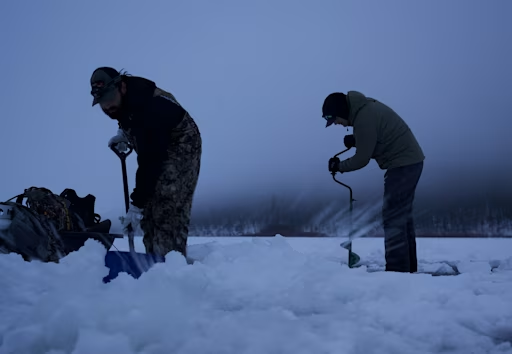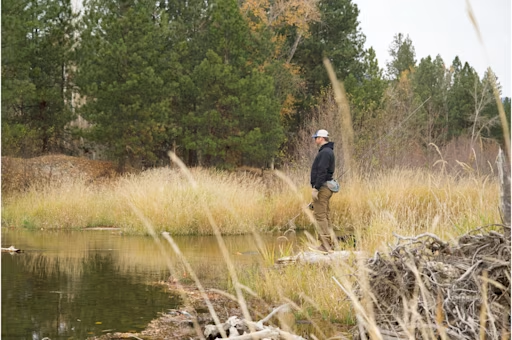Methods for catching bait
Ever wanted to catch your own baitfish? Perhaps you want to learn some new methods. Check out our newest post to up-your-game when it comes to catching live bait.
Share this article

Looking to up your chances for non stop action on your next fishing trip at your local fishing spot?

Next time you are getting ready to go on your next fishing trip out to the beach, local pond, or inlet grab your 5-gallon bucket and go catch some live bait. There are tons of different methods but I have come to find there are 3 top methods: Cast netting, Sabiki rig, and trap. All are successful and will work in many different situations in both fresh and salt waters.
Things to look for when trying to find baitfish:

Structure; bridges,drain pipes
Birds diving on bait pods
Disturbances on surface
Trees and submerged debris
Seagrass beds mangroves
Jetties and spillways
Now that we have where to find and look for the bait. Let’s get on to how to catch them.
The use of a cast net for catching live bait is my go to. It is also probably the most popular among anglers. They work great to catch a good amount of bait in one single net. They are very versatile and can basically be used in any type of waterway, lake, or ocean. Just make sure you double check where you are tossing the net. Don’t want to get tangled up with any debris that may be submerged. It will happen, but thankfully a cast net is affordable and can always run out and grab another one.
Tips for using a cast net:

If new to using a cast net make sure you are using the right size net and mesh size for the bait you are targeting. If fishing for large mullet you would want to use a larger size such as a 8-10ft net with 1inch mesh. If looking to catch 2-3 inch small baits you would be safe to go with a 6ft net with ¼” in mesh. The weight plays a part as well the heavier the net the quicker it will fall and help in strong currents. Keep in mind your limits when it comes to the weight of your cast net as the heavier it is the harder to throw. Practice makes perfect when it comes to cast netting so don't give up you will get it down!
Tips for using a Sabiki:
Sabiki rigs are a great way to catch some bait. Catching a wide variety of baits such as sardines, pilchards, and minnows.
The Sabiki rig is made up of 6-10 small golden hooks in a row on a single line and have feather-like pieces attached to the hooks which mimic small baitfish. Great thing about these rigs is they come out of the package ready to go basically. All you need to do is attach a weight to the snap swivel on the rig and your ready to catch some bait.
Sabiki work great around piers and jetties where baitfish congregate. All you do is jig up and down around the schools of baitfish and should get multiple baits on a sabiki rig each cast. That's what makes it effective multiple baits with minimum casts needed.
You are going to want to use a very light spinning reel when using a sabiki rig with maybe 6-8 lbs mono line. Usually not using anymore than an ounce for weight. May need a bit more weight only if the current is ripping or windy.
Using a Minnow Trap:
Another great way to catch some bait is using a minnow trap. I usually have best luck with this method in freshwater environments. Though it can be used in saltwater as well for Pinfish for example.
You can usually find minnows around down trees and submerged debris. Best way is to chum the surrounding area with pieces of bread and even can use dog and cat foods to lure out the minnows from their hiding spots. Usually have luck in shallow waters close to the shoreline finding minnows and other species of baitfish.
Once you have located the minnows or other baitfish in the area. Now you are ready to toss in the minnow trap. Inside the minnow trap can use bread, dog food, or even some frozen left over bait from a previous trip. The traps are usually made with two entrances on either side with an entryway. Make sure to add a little weight to the middle of the minnow trap so that it sits horizontal in water and wont move with current if any. The fish go in one of the two openings and then for some reason forget how to get out and become trapped.
Keeping the Bait Alive:
Now that we have got the methods to catching some live bait out of the way. You will need a 5 gallon bucket with an aerator to keep the baitfish alive. Another tip is that you have quite a bit of live bait in a bucket or livewell and make sure to change water frequently to keep the bait lively. Lively baits have a better chance at getting the attention of a hungry big fish.
Now grab a bucket, pick out the method which works best for you and get a load of live bait to hook up with that trophy fish on your next trip!!!! Tight Lines!!!
This post was written by Fishbrain user Michael Kelly. You can follow Michael in the Fishbrain app or download the app at Apple or Google Play.

Download the Fishbrain app and access the best fishing spots in your area
Related blog posts
Discover the best spots, techniques, and gear for successful fishing in urban areas and city waters on Fishbrain.

Master the hardwater season with advanced ice fishing tips . Learn how to find fish faster, refine your search and adjust presentations to catch more fish all winter long.

Your guide to Victoria’s best fish to catch in rivers, lakes, and coastal waters. Learn prime species, fishing tips, and key regulations



